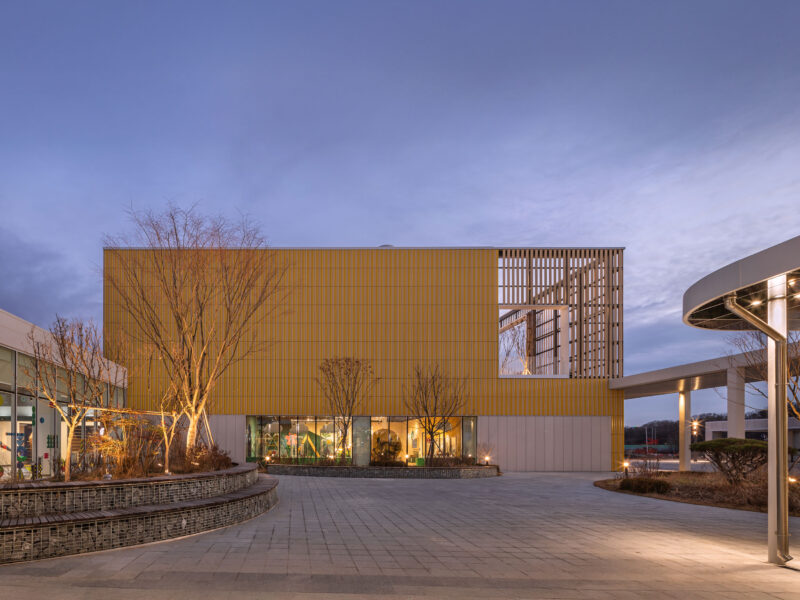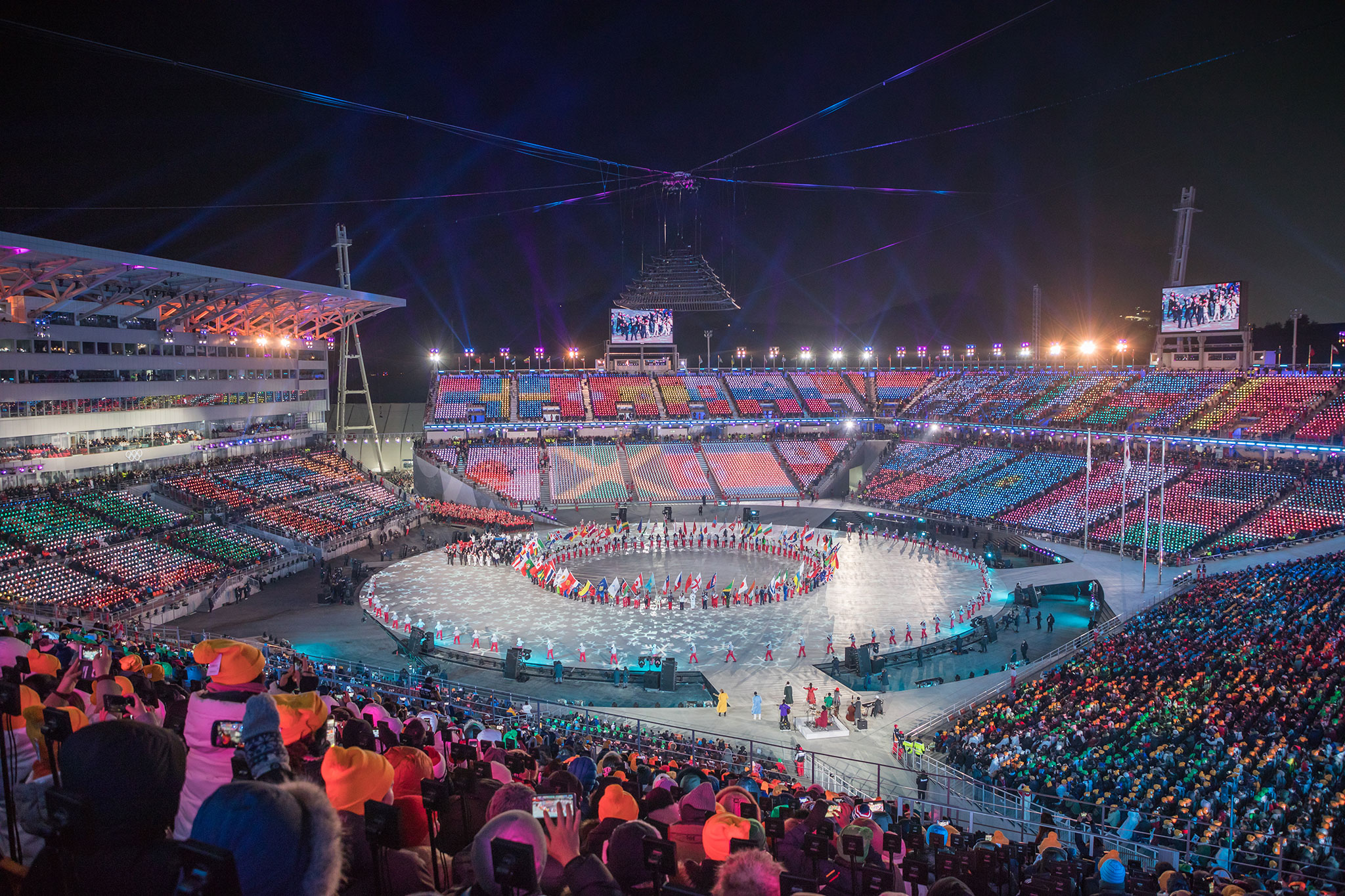
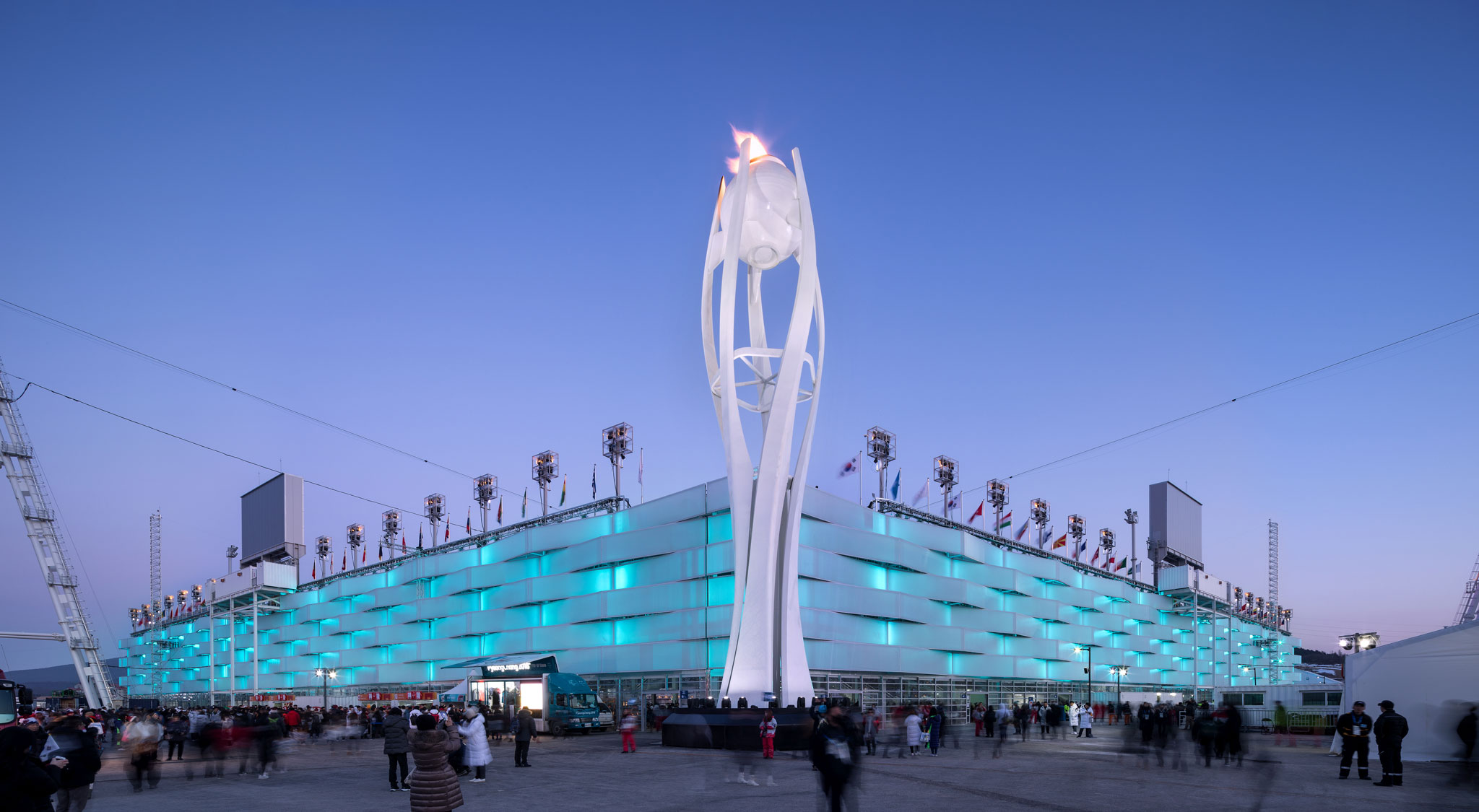
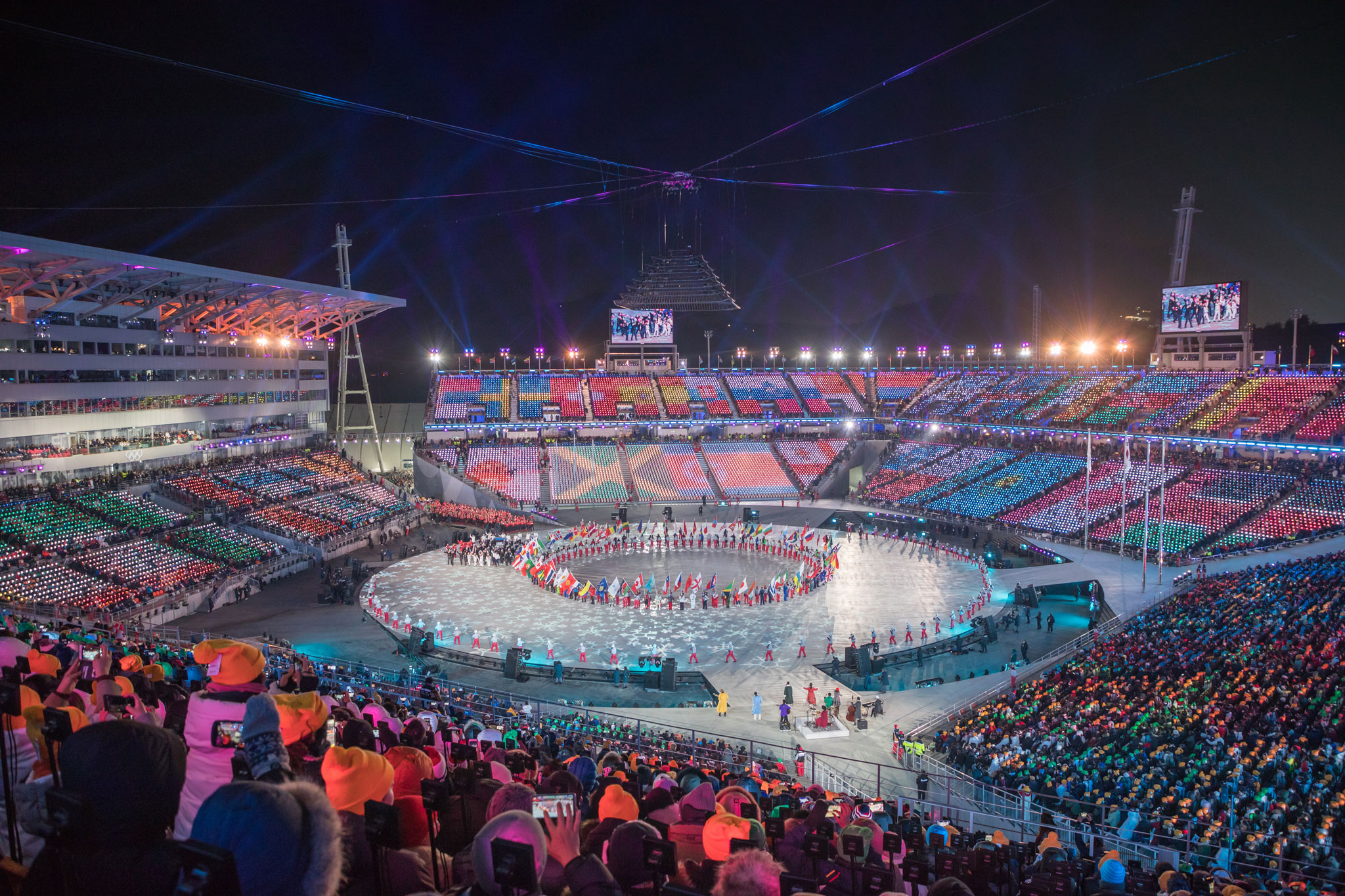
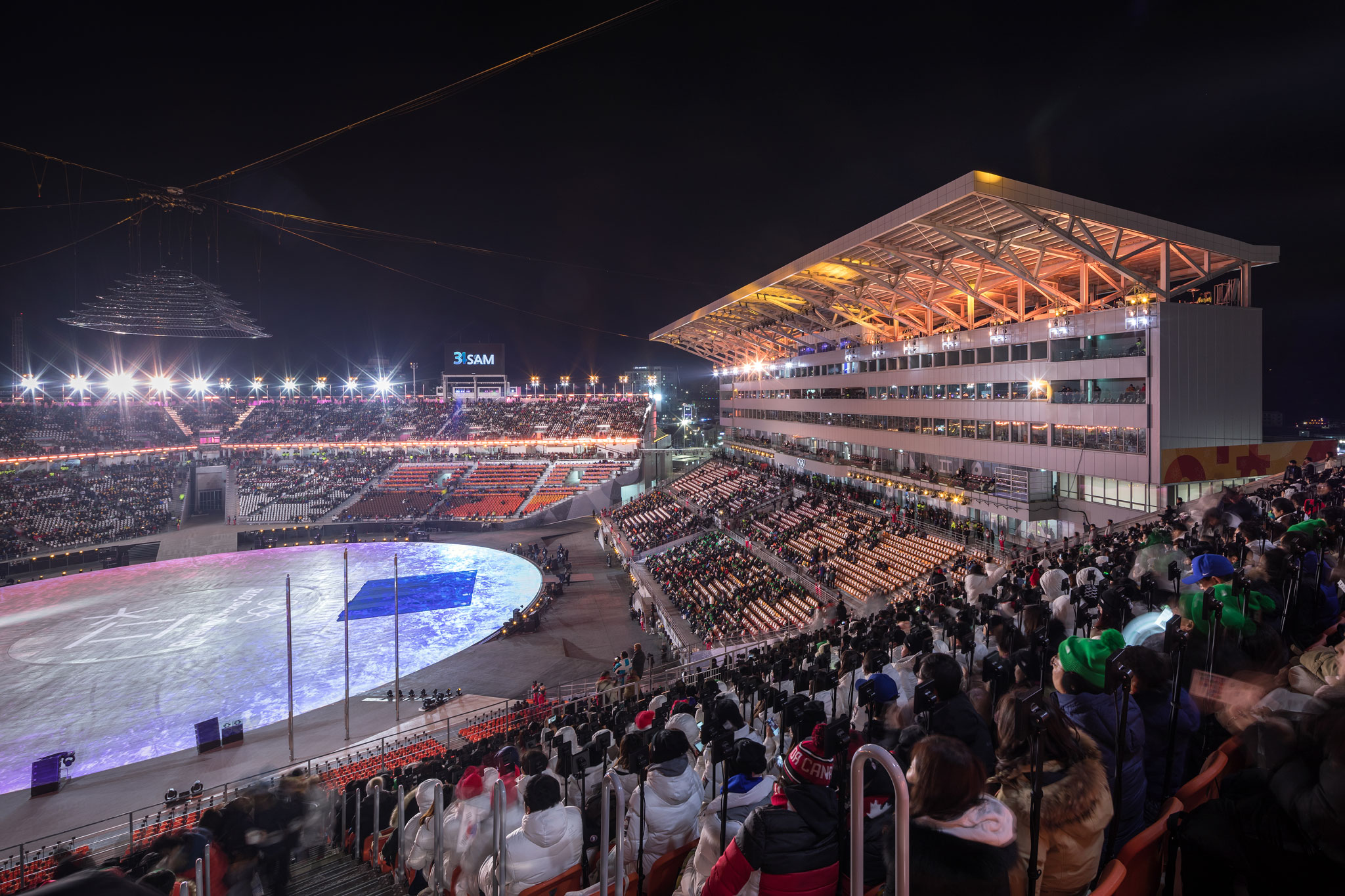
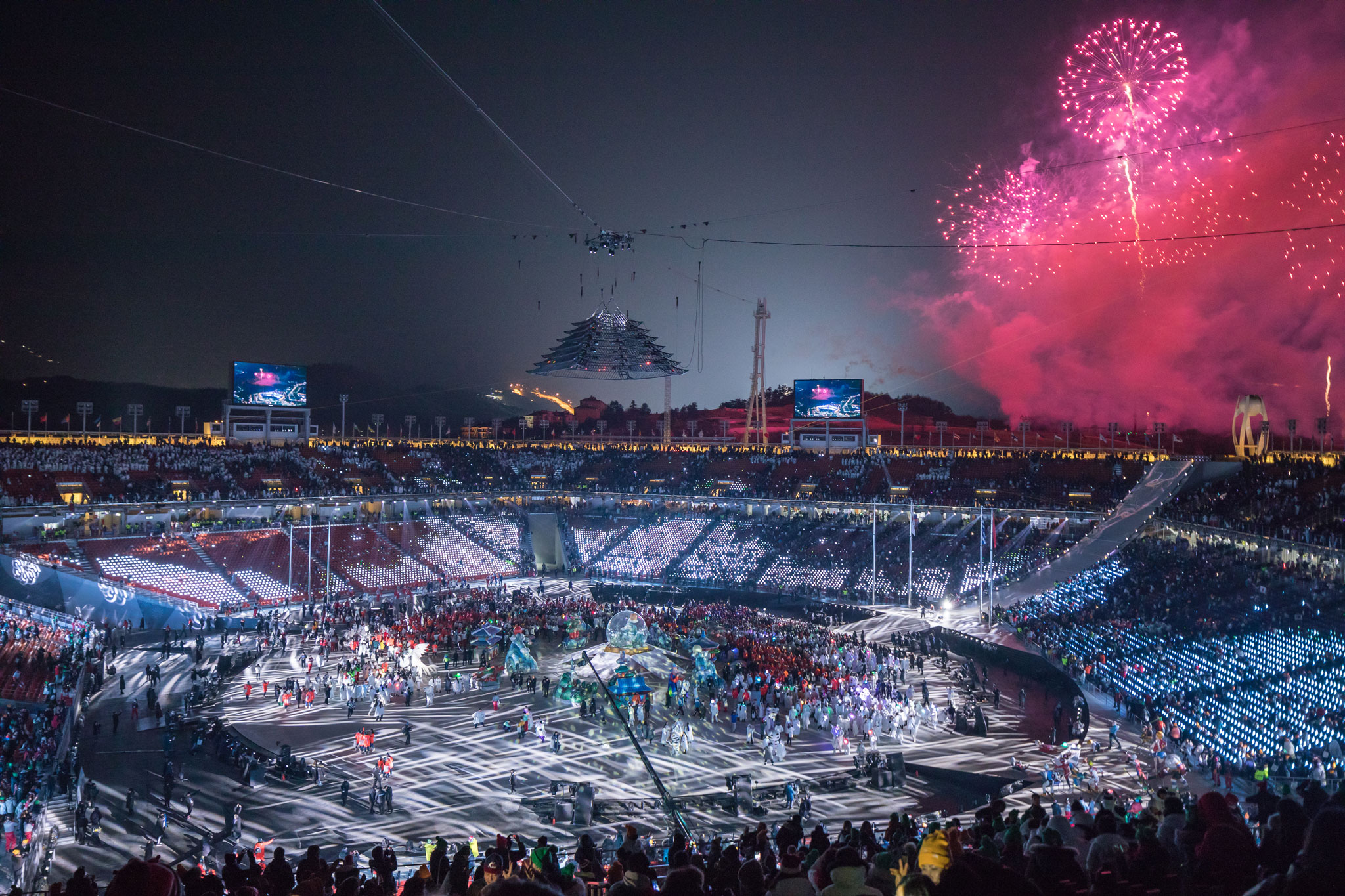
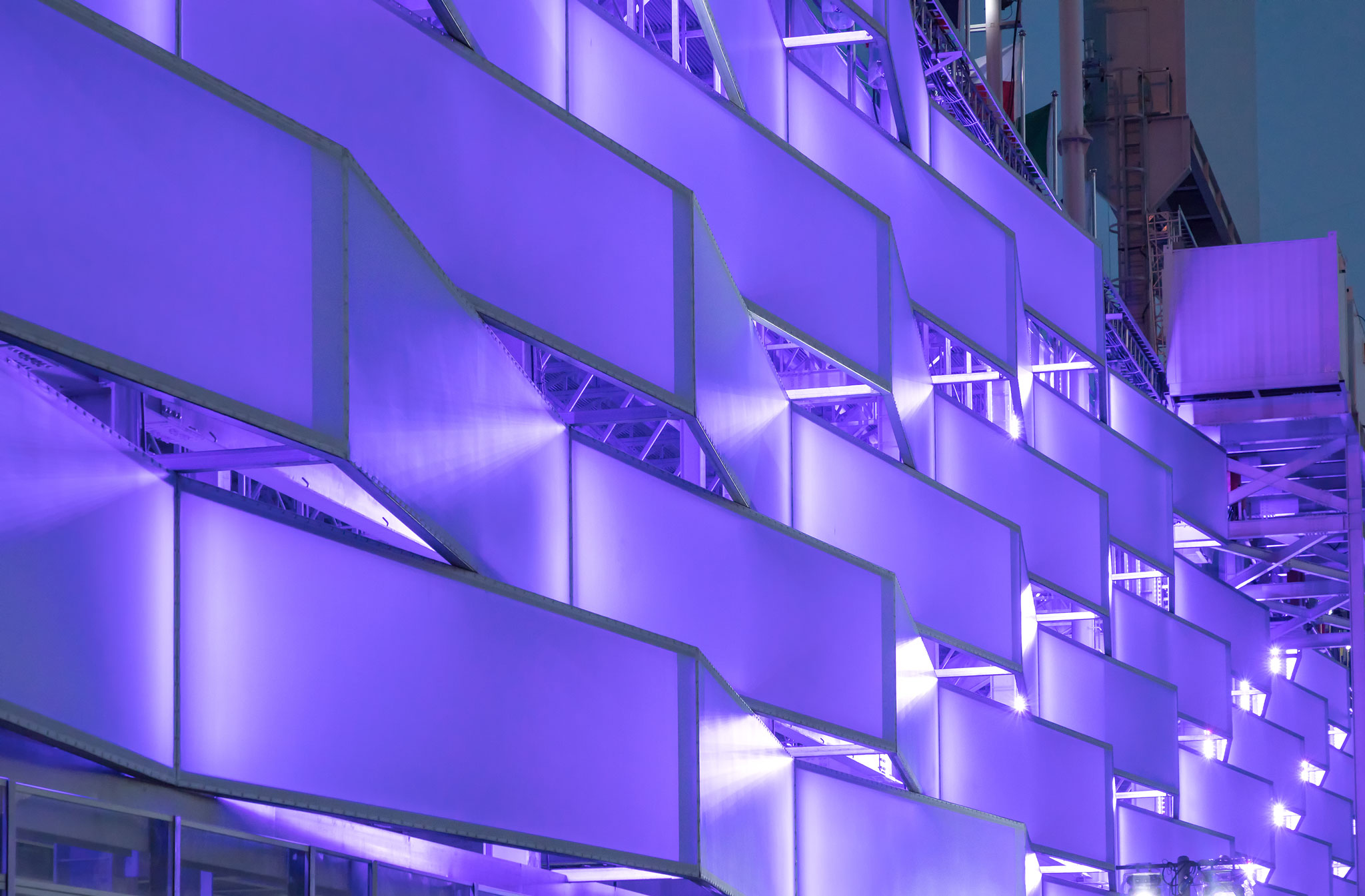

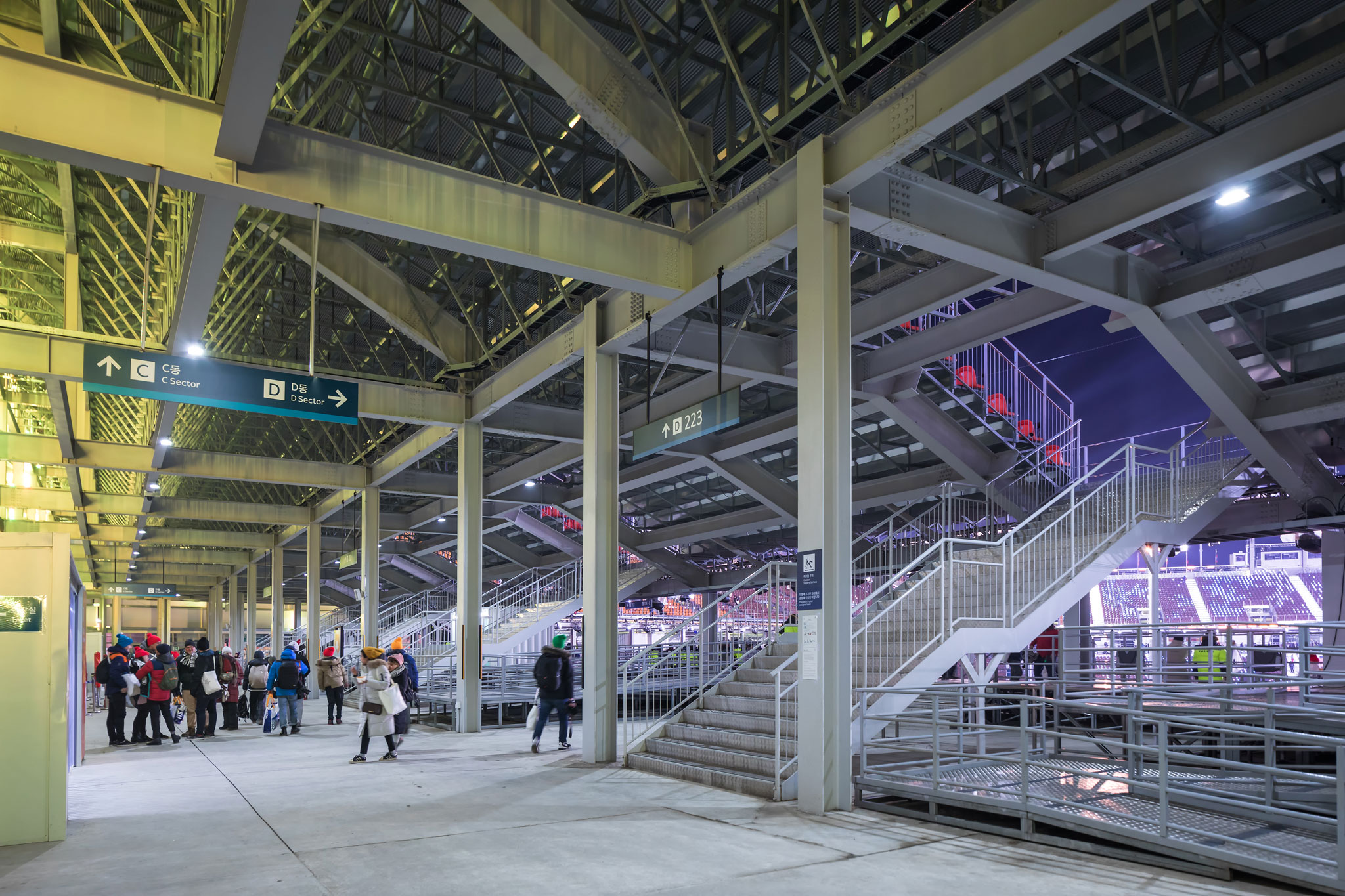
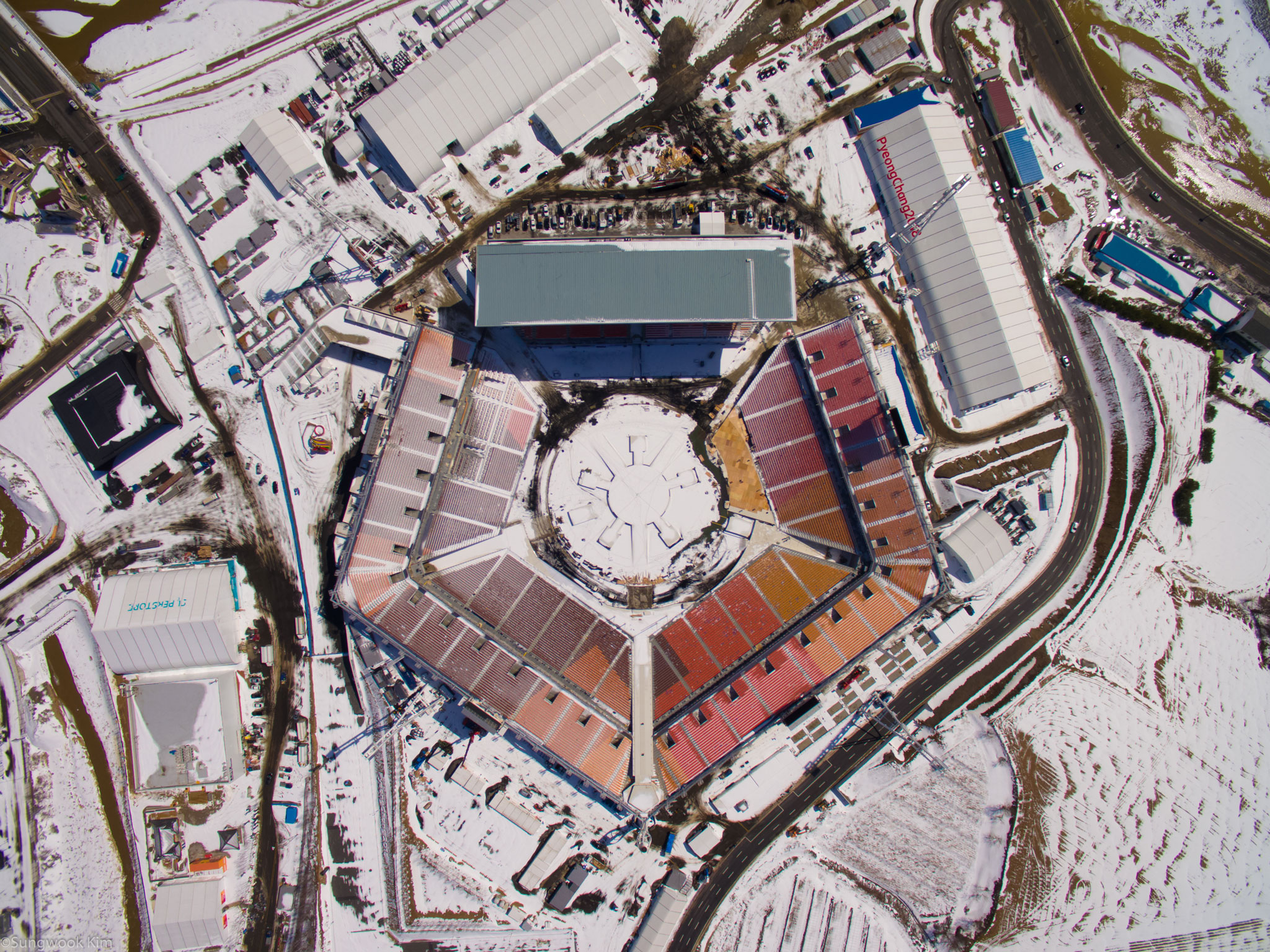
The Pyeongchang Winter Olympic Stadium was the first in Olympic history designed with the goal to be dismantled and recycled after the event period, thus requiring a different approach than ordinary buildings rooted firmly in the ground to hold long-standing history and memories. All temporary stands and facilities used during the Olympics were leased. Part of the headquarters building installed on flat land would remain a memorial hall, and the sloped site that held the stands would later be converted into a natural-style seating area to preserve the Olympic memories over time.
The site for the opening and closing ceremonies consisted of three piecewise areas: mountain, road, and river areas. The master plan created a new path connecting these three terrains to integrate Pyeongchang’s landscapes and people, organizing the space into three main zones: Outer Courtyard (Medal Plaza), Inner Path (Olympic Promotion Pavilion), and Inner Courtyard (Ceremony Venue). These are linked via the central Olympic Plaza walkway. The stadium, composed of five buildings, features an efficient floor plan for smooth event operation, and spectator areas are clustered by zone for viewing comfort. Utilizing the advantages of the pentagonal shape, five entrances provide access to the stage, enabling varied performance techniques.
Article
-
Status
Completed
-
Client
2018 Pyeongchang Winter Olympic Games and Paralympic Winter Games Organizing Committee
-
Program
Sports, Public
-
Design Year
2015
-
Completion Year
2017
-
Location
Pyeongchang-gun, Gangwon-do
-
Site area
246,977.00m2
-
Gross Floor Area
62,504.01m2
-
Building Area
31,224.74m2
-
Number of Levels
B1, 7F
-
Participants








The Pyeongchang Winter Olympic Stadium was the first in Olympic history designed with the goal to be dismantled and recycled after the event period, thus requiring a different approach than ordinary buildings rooted firmly in the ground to hold long-standing history and memories. All temporary stands and facilities used during the Olympics were leased. Part of the headquarters building installed on flat land would remain a memorial hall, and the sloped site that held the stands would later be converted into a natural-style seating area to preserve the Olympic memories over time.
The site for the opening and closing ceremonies consisted of three piecewise areas: mountain, road, and river areas. The master plan created a new path connecting these three terrains to integrate Pyeongchang’s landscapes and people, organizing the space into three main zones: Outer Courtyard (Medal Plaza), Inner Path (Olympic Promotion Pavilion), and Inner Courtyard (Ceremony Venue). These are linked via the central Olympic Plaza walkway. The stadium, composed of five buildings, features an efficient floor plan for smooth event operation, and spectator areas are clustered by zone for viewing comfort. Utilizing the advantages of the pentagonal shape, five entrances provide access to the stage, enabling varied performance techniques.


